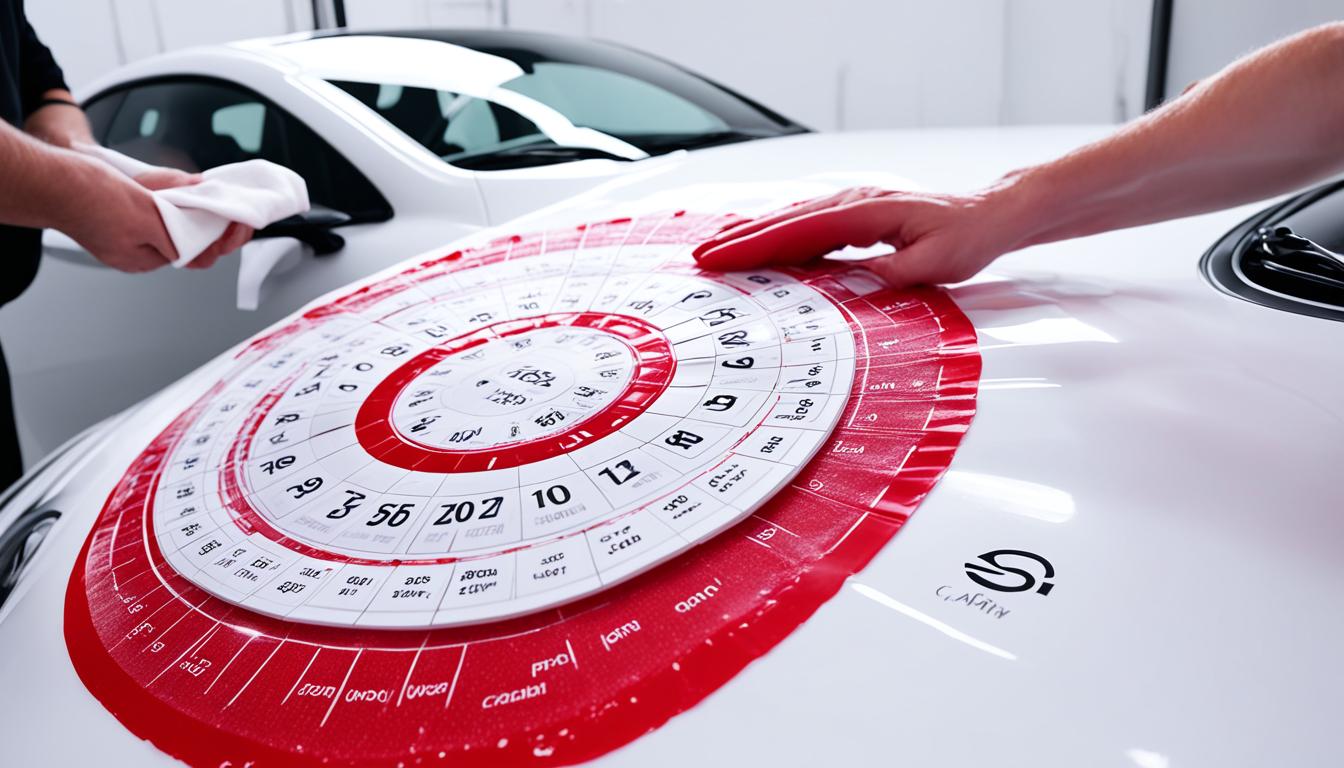Car Waxing Frequency

Waxing Frequency: How Often to Wax for Optimal Car Shine
Unlock the full potential of your vehicle with the ultimate detailing service! Click here to visit Top Choice Car Detailing and easily book your appointment online. Elevate your car's appearance with the experts in Toronto today!

We all crave that showroom shine for our beloved cars. But how often should you wax your car to achieve that optimal shine? Is twice a year enough? Or is there a better waxing schedule? Discover the best waxing frequency for the optimal car shine that will turn heads on the road.
Key Takeaways:
- Waxing your car at least twice a year, during spring and winter, is recommended for optimal protection.
- Applying wax during these seasons safeguards your car against harsh environmental elements.
- Assess your car's needs, considering factors like daily contaminants and extreme conditions.
- Regularly check the water beading on your car's surface to determine when it's time for a new coat of wax.
- Factors like climate, driving habits, parking conditions, and wax type can influence waxing frequency.
Benefits of Regular Waxing
Regular waxing offers numerous benefits for your car beyond just a sleek appearance. It serves as a protective barrier that helps preserve your car's paint job, preventing fading, oxidation, and minor scratches. By protecting against environmental contaminants, such as UV rays, road salt, tree sap, and bird droppings, waxing can extend the lifespan of your car's paint.
This enhanced protection not only maintains the overall appearance of your vehicle but also impacts its resale value. Well-cared-for paintwork is often considered in the pricing determination, allowing you to command a higher price when it's time to sell or trade-in your car.
Furthermore, regular waxing can save you money in the long run by reducing the need for costly repairs and repainting due to faded or damaged paint. The wax acts as a shield, guarding your car's paint against the elements and minimizing the impact of everyday wear and tear. By investing in regular waxing, you're protecting your car's value and avoiding potential expenses down the road.
On a more personal level, waxing your car can give you a sense of pride while driving. It enhances the overall look and shine of your vehicle, making it stand out on the road. The glossy finish achieved through regular waxing elevates your car's appearance and ensures you turn heads wherever you go.

"Regular waxing is like armor for your car, providing an extra layer of protection against the elements. It's a small investment that can yield significant returns, both in terms of visual appeal and resale value."
In conclusion, waxing your car regularly is a wise investment in maintaining its appearance and protecting its value. By enjoying the benefits of enhanced shine, increased resale value, and improved paint protection, you can ensure your vehicle looks its best for years to come.
Factors Affecting Waxing Frequency
When it comes to waxing your car, several factors come into play when determining how often you should do it. These factors can help you find the ideal waxing frequency that suits your car's needs and maintains its shine and protection. Let's take a closer look at these factors:
- Climate: Climate plays a significant role in waxing frequency. Extreme weather conditions such as intense sun or salty roads can accelerate wax degradation. In these cases, more frequent waxing may be necessary to ensure your car's paint is adequately protected.
- Driving Habits: Your driving habits also affect how often you should wax your car. If you frequently go on long-distance drives or enjoy off-road adventures, your car is exposed to additional contaminants and may require more frequent waxing to counteract the effects of these elements.
- Parking Conditions: The parking conditions of your vehicle are another factor to consider. If you park your car outdoors, it is exposed to more environmental damage, including UV rays, bird droppings, and tree sap. Cars parked in outdoor environments may warrant more frequent waxing to maintain a protective barrier.
- Wax Type: The type of wax you use can also impact waxing frequency. Synthetic waxes often offer longer-lasting protection compared to natural waxes. When choosing a wax, consider the durability it provides and the specific needs of your car.

Considering these factors will help you determine the ideal waxing frequency for your car. By understanding the climate, your driving habits, parking conditions, and choosing the right wax type, you can ensure optimal protection and a long-lasting, beautiful shine for your vehicle.
Car Waxing Methods and Tools
When it comes to maintaining the shine and protection of your car's paint, the application of wax is crucial. Thankfully, there are various methods and tools available to make this process easier and more efficient.
One of the most common methods is manual waxing, where you can apply wax by hand using a soft cloth or an applicator pad. This allows for precise application, ensuring that every inch of your vehicle receives the necessary protection. Manual waxing is a cost-effective option that many car enthusiasts prefer.
For those seeking enhanced efficiency and convenience, power washers for car detailing or car detailing pressure washers are a game-changer. These tools often come equipped with a dedicated waxing feature, facilitating even application and saving you precious time. The power washer or pressure washer evenly distributes the wax, resulting in a more uniform protective layer.
If you prefer a hands-off approach or find yourself in need of more frequent waxing, utilizing these methods and tools can help you achieve optimal results. Whether you choose manual waxing or embrace the power of a specialized washer, both approaches will ensure that your car's paint remains protected and gorgeous for miles to come.
